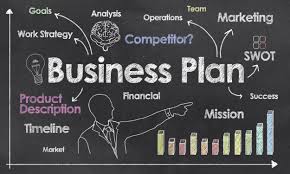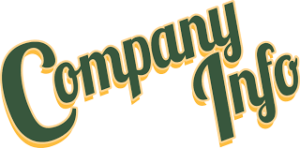A Simplified Guide To Business Plan Format
 A Simplified Guide To Business Plan Format
A Simplified Guide To Business Plan Format
Business plans helps to know what your business is about and what your brand offers. It guides you through every stage of starting and managing your business. Your business plan can serve as a road plan for how you want to structure, run and grow your business, it can also be a way to think through the key components of your business. It is not enough to have a good business idea, but you must be able to put it down in a plan, to help verify if it is workable. Planning is very key to any new program, as this is what lays down where you are currently, where you’re going and where you hope to be in your business.
A business plan is what helps you get funding from investors and business partners. You cannot get people to fund your business if they aren’t sure that the business is viable. Investors want to be sure that they’ll see a great return on the business before they invest in it. Your business plan is what you’ll use to make people believe that working and investing in your business is the best deal.
There’s no strict rule about how to write a business plan, once it meets your business needs. Most business plans fall into two categories; traditional or lean startup. Traditional business plans are the most common, they have a standard structure, and allows you to have different sections of full details. They tend to be long because of the details they carry. This business plan is very detailed, and comprehensive, it also requires more time and effort to write. Most investors request for this type of business plan before they can invest.
Lean startup business plans also have a standard structure, but are less common than the traditional business plan. This type of business plan only summarizes the important points of your plan, they take less time to prepare and are not usually long. Some investors might request for this also.
Traditional business plan format
If you want a comprehensive, detailed plan, or plan to request funding from traditional sources, then the traditional business format is what you should consider. Traditional business plans have different sections, but you don’t necessarily have to cover all the sections in your plan; all you need is to pick the ones that are relevant to your business.
Sections of a traditional business plan
This section shows a brief overview of what your business is about, your mission statement, what products you offer, and other basic information about your leadership team, employees and location. It can also include financial information and growth plans if you want to ask for funding from traditional sources.
This provides detailed information about your company. It entails the problem your company is going to solve, your target market, and your competition. You should also include competitive advantages you have over your competition to make consumers prefer you. This is the section where you talk about the strengths of your business as a whole.
 A Simplified Guide To Business Plan Format
A Simplified Guide To Business Plan Format
You will need to do a comprehensive research about the industry of your business and target market. You should be in the know of what your competitors are offering and what their strengths are. How they do what they do, and how you can make yours better, are questions that should be answered in this section.
- Organization and Management
This describes the legal structure of your business. State if you have or plan to incorporate your business as a C or an S corporation, a limited liability company, a partnership, or a sole proprietorship. This is where you plan out how your business will be structured and the management that will run it. You can also include your resume and those of key personalities in our business, and how their experiences will contribute to the growth of the business.
Read Also: 10 Important Tips to Raise Money For Your Business
This is where you talk about what your business offers. Describe the products you offer, your target market, and how it will benefit your customers. You should also go into detail about what your product lifecycle will look like, the processes involved and the outcome you expect to have. You can also include the research and development you’re doing for your products or services. This section includes a full description of your products and services, current status of products, product development goals and research, intellectual property, sourcing, and fulfilment
This involves how you intend to get your products or services across to customers. There’s no hard and fast rule to approach a market strategy, but it should be able to fit your current need. Your objective in this section is to highlight how you want to get customers and retain them. It will also talk about how sales will eventually take place. You should endeavor to go into details about your market and sales strategies, because you’ll have to come back to this section when you make your financial projections later.
 A Simplified Guide To Business Plan Format
A Simplified Guide To Business Plan Format
This is where you highlight your funding requirements, especially if you’ll ask for funding from investors. This should show where you currently are financially, and where you hope to be in some years to come. Give a full description of how you’ll use your funds, and what you’ll use it for. Anyone who reads this section should be able to know where their fund will go if they decide to invest in your business. Specify if you’ll need to get resources and equipment, pay salaries, or cover other specific bills until profit increases. You should also include a description of your future financial plans, like paying off debts or selling off your business.
This can be in the same section with Funding request, but you can also choose to have them in different sections. This is the section that shows people that your business is stable and will be a financial success. Provide a detailed financial outlook for the next five years, and include balance sheets, cash flow statements, and capital expenditure budgets. Clearly explain your financial projections and match them with your financial requests. If your company is an already established one, you should include income statements, cash flow statements, and balance sheets for the last three to five years. You can also use graphs and charts to highlight the financial story of your business.
This is the section that includes all other information that couldn’t fit into the mains sections. This doesn’t make them less important though. This is a perfect place to include charts, graphs, resumes, letters of references, licenses, legal documents, and other important documents and contracts.
Hope you enjoy this article?
Share your thoughts in the comment session.
Contact us today for your business consultancy and business advisory services. We can help you fine tune your idea, structure your business, market your business, train your staff, consult on your retirement plan, coach you for financial success. We also write business plan and help with fund raising strategies and Grant applications. We can help you start, grow and expand your business.
Call or WhatsApp us now on 081 0563 6015, 080 7635 9735, 08113205312 or send email to dayohub@gmail.com and we will solve any of your business problem.
Related